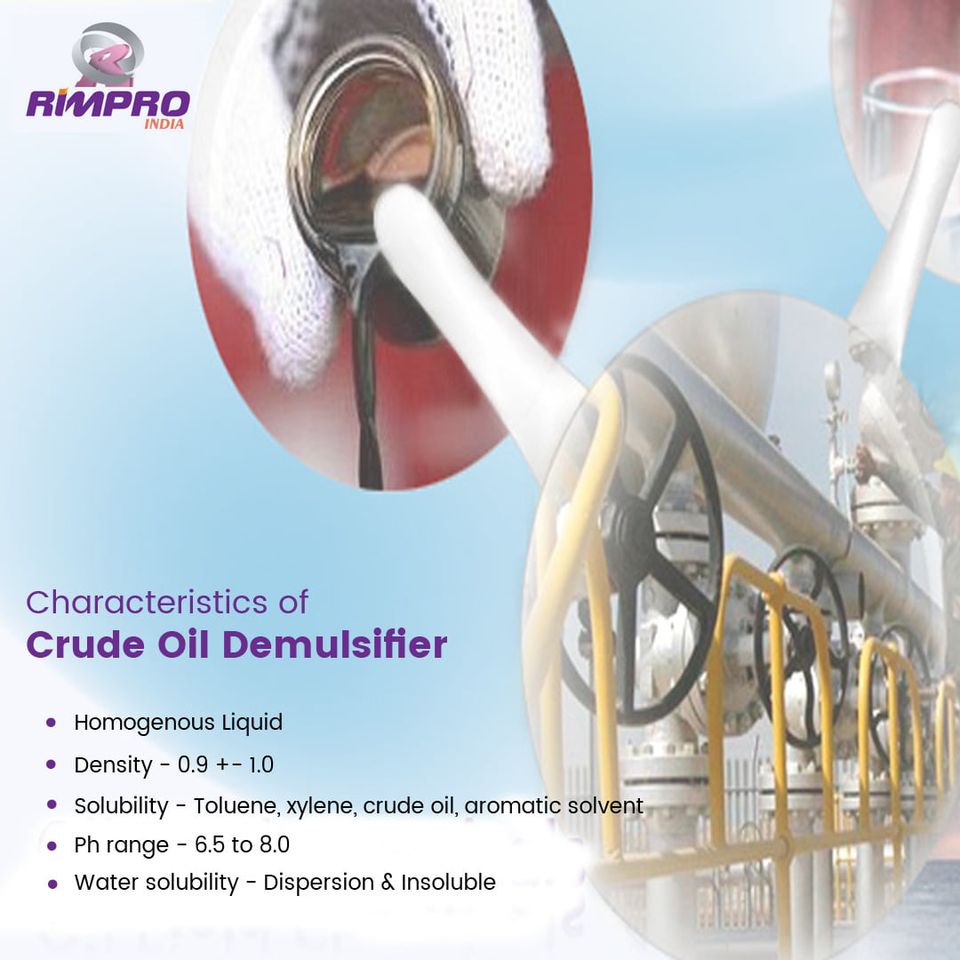 Menu
Menu
Different Methods for Demulsification of Crude Oil in Water
The process of demulsification is one of the most important processes used in the petroleum industry to produce various lubricants. Demulsification is performed by a number of different methods, such as ultrasonic energy, centrifugal acceleration, and microwave heating. All these methods work differently and have varying effects on the end product.
Do Amino Acid Ester Demulsifiers Have High Efficiency in Water Removal?
A number of studies have been conducted in recent years on the emulsification of crude oil. These have helped to shed light on the mechanisms by which crude oil emulsions are formed and the factors that influence their stability. The present invention focuses on the use of natural or artificial amino acid ester derivatives in the demulsification of crude oil emulsions in water.
Water is one of the most common components of crude oil emulsions. As such, it is essential to remove the excess before refining the crude oil. Amino acid-based demulsifiers have been demonstrated to have high efficiencies of water removal.
Ionic amino acid esters are known to be capable of breaking oil-in-water emulsions. They form a crude oil phase at the top of the aqueous phase. It is this phase which subsequently breaks.
These compounds are also used to reduce the water content of shale oil. In addition, they are used in the production of biodegradable polyphosphazenes.
Natural emulsifying agents include acidic compounds and asphaltenes. Resins also play a role in crude oil emulsion formation.
The efficiency of water removal is calculated by the volume of separated water over a storage period. The RWE (Remaining Water Efficiency) is dependent on the dosage of the amino acid-based demulsifier.

Demulsification of Crude Oil with Ultrasonic Radiation
Demulsification of crude oil emulsions is an important process that has been studied in recent years. Different approaches have been developed to achieve this. Chemical, mechanical, and thermal demulsification methods have been used. The process of demulsification involves several processes such as creaming and sedimenting.
Ultrasonic field experiments were conducted to assess the performance of the ultrasonic field in the demulsification of crude oils. Three different crude oils with codes of 010, 020, and 030 were analysed in the experimental study.
Ultrasonic irradiation time and intensity were tested to evaluate the effects of these two factors. Higher ultrasonic field intensities resulted in increased water segregation from the oil.
The effect of the heating process was also investigated. For the purpose of the experiment, the emulsions were thawed to a certain temperature. After that, the emulsions were injected with freshwater and chemical emulsifier. They were then subjected to five minutes of mixing in a high-speed electric mixer.
The irradiation duration and intensity of the ultrasonic fields were measured to determine the effect of these parameters on the demulsification of the crude oils. In order to improve the efficiency of the demulsification, the irradiation time should be less than five minutes.
The results show that the efficiency of the procedure is higher for light crude oils than for thick crude oils. This is because the emulsions from thick crude oils have long hydrocarbon molecules that are more difficult to break.

Microwave Heating for Demulsification of Crude Oil
Microwave heating for demulsification of crude oil is a very effective technique. It allows the separation of water from crude oil in a short period of time, without requiring any chemical additions.
Demulsification of crude oil is a process that removes acidic species from the oil. These compounds migrate from the crude oil to the water phase, depending on the factors such as the temperature, process time, and heating mode. The main variable that affects the demulsification process is the temperature.
Microwave heating can reduce the intensity of acidic species in the oil phase. This reduction in intensity was observed for naphthenic acids. Naphthenic acids are present in the process water used during petroleum refining. Using microwave heating for demulsification of crude oil can help promote the separation of naphthenic acids.
Ultrasonic Energy Method to Remove Salt & Water
Ultrasonic energy is one of the methods used to remove salt and water from crude oil. However, this method requires careful control of the hydraulic residence time to maximize the benefits of the procedure. The effects of ultrasonic field intensity on the amount of water separated from crude oil were evaluated. Several samples of medium-gravity crude oil were treated with different ultrasonic fields. The amount of water segregated varied depending on the irradiation time, ultrasonic field intensity, and initial water concentration.
Results showed that an increasing ultrasonic field intensity increased the rate of water segregation from the crude oil. However, longer irradiation times reduced the effect of the treatment. This resulted in a reduction in the number of water droplets forming.
The molecular density of the separated water droplets was calculated and applied to a population-balance model to determine the adhesion coefficient function. These functions were used to calculate formulaic relationships.
Ultrasonic energy for demulsification of crude oil has gained attention recently. Among the factors that influence the effectiveness of ultrasonic treatments are the intensity of the ultrasonic field, the duration of irradiation, the amount of freshwater injected, and the chemical emulsifier.
Although the effect of the ultrasonic field intensity on the separation of water from the crude oil is obvious, it is not always easy to determine the best combination. Therefore, a separate ultrasonic irradiation is recommended.
